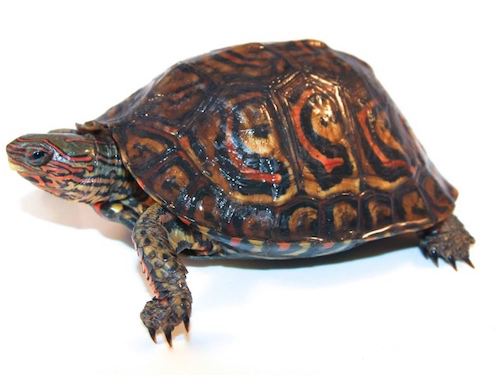Habitat and Distribution of the Central American Wood Turtle
The Central American Wood Turtle, scientifically known as Rhinoclemmys manni, inhabits a specific range of ecosystems that markedly influence its survival and distribution. This species primarily thrives in freshwater environments, often found in slow-moving rivers, streams, and swamps. These habitats not only provide essential resources, such as food and shelter but also play a critical role in their reproductive processes. The presence of dense vegetation along the water’s edge is crucial, as it offers both protection from predators and conducive nesting sites.
Geographically, the Central American Wood Turtle is predominantly located in countries like Nicaragua and Costa Rica. Its distribution extends across various freshwater systems within these regions, highlighting the importance of maintaining healthy riverine ecosystems. The turtle’s presence in these locations suggests a preference for habitats with abundant aquatic vegetation, which serves as a source of sustenance. Additionally, these environments typically exhibit a stable temperature and water quality, both of which are vital for the turtle’s metabolic activities and overall well-being.
Factors influencing the habitat choices of the Central American Wood Turtle are diverse. Temperature fluctuations can significantly impact their behavior and physiological processes, necessitating habitats where thermal conditions remain relatively constant. Moreover, water quality is a critical determinant; turtles are often found in clean, well-oxygenated waters that promote a healthy ecosystem for various aquatic organisms. Therefore, the conservation of these habitats is paramount for the sustainability of Rhinoclemmys manni populations, as environmental degradation can adversely affect their survival, reproductive success, and long-term viability.
Conservation Status and Threats to the Central American Wood Turtle
The Central American Wood Turtle (Rhinoclemmys manni) is currently classified as a vulnerable species, primarily due to significant threats that have led to a sharp decline in its populations. Habitat destruction remains one of the most urgent issues faced by these turtles. Deforestation for agricultural expansion, urbanization, and infrastructure development fragment their natural habitats, adversely impacting their ability to thrive in the wild. This loss of habitat not only reduces their nesting sites but also increases their risk of predation.
Another critical threat is poaching, driven chiefly by the demand for meat and shells in local markets. This illegal harvesting of Central American Wood Turtles has become a worrying trend, contributing to the further decline of their numbers. In tandem with poaching, the illegal pet trade poses a significant risk, as these turtles are often captured and sold as exotic pets. Unfortunately, many of these individuals do not survive in captivity, leading to even greater depletion of wild populations.
Efforts to conserve the Central American Wood Turtle are being spearheaded by various organizations and dedicated conservationists focused on habitat preservation and law enforcement enhancements. Initiatives include establishing protected areas and enforcing anti-poaching regulations to ensure that the remaining populations can flourish in their natural environments. Public awareness campaigns aimed at educating communities about the ecological importance of these turtles also contribute significantly to their conservation. Moreover, individuals can assist in these efforts by supporting conservation organizations, advocating for sustainable practices, and participating in local clean-up initiatives that help restore habitats.
Preserving the Central American Wood Turtle is not solely about saving a species; it is also crucial for maintaining the balance within their ecosystem. Effective conservation strategies are essential in mitigating the threats faced by these turtles and ensuring their long-term survival.





